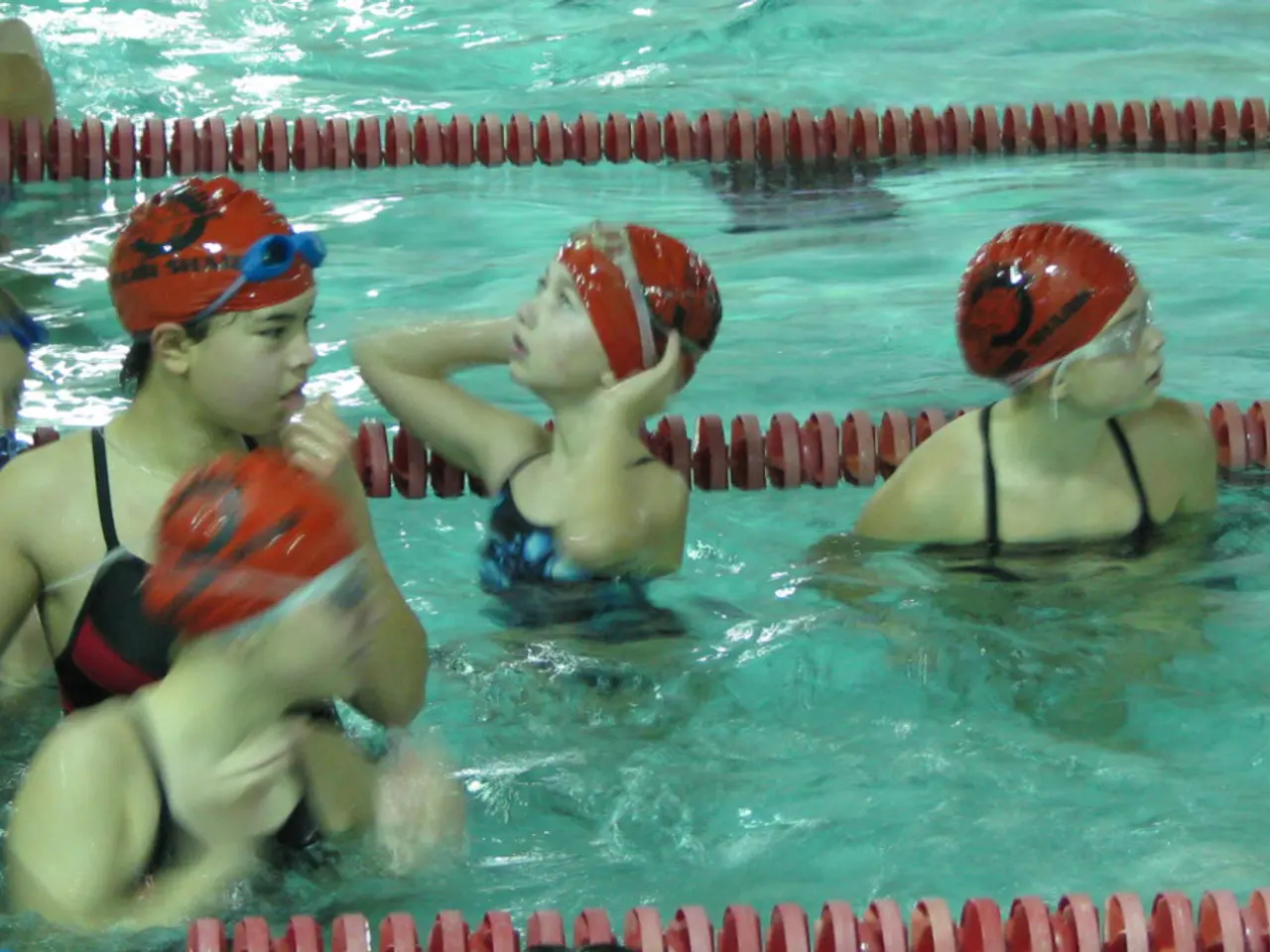"Avoiding a Silent Summer Drowning: Essential Knowledge to Prevent a tragedy"
In recent weeks, France has witnessed a concerning rise in drowning incidents, particularly in rivers and watering holes. According to data from Santé publique France, between June 1 and July 2, a total of 429 incidents were recorded, with 109 resulting in fatalities [1].
A significant number of these deaths were teenagers over the age of 13, and 19 were minors. Tragically, incidents like these occurred in various regions, including Deux-Sèvres, where a 24-year-old woman died in a river during a music festival, and Puy-de-Dôme, where a 15-year-old teenager lost their life in a watering hole on July 14 [2].
Axel Lamotte, the pedagogical manager for lifeguard training and communication at the Fédération française de natation, emphasises the importance of specific safety measures for teenagers and adults to prevent such accidents.
Firstly, it is crucial to avoid swimming alone and never dive into unfamiliar waters without checking depth and obstacles. Rivers and watering holes can have strong currents and hidden hazards [1].
Secondly, be aware of heat-related risks such as heatstroke and dehydration, which may impair judgment and physical ability. It is advised to drink water regularly—at least one glass every 20 minutes—and avoid alcohol and sugary drinks that can contribute to dehydration [3].
During high temperatures (above 30°C), limit outdoor activities between 11 a.m. and 4 p.m., when heat is most intense, to prevent heat exhaustion which can increase drowning risk. If swimming is unavoidable, choose shaded or cooler areas and wear light-colored, loose clothing and a hat to protect against heatstroke [1].
Follow local advisories about water restrictions and safety regulations, especially as water levels may change and create unexpected currents or hazardous conditions [2].
Always supervise teenagers and adults who are swimming, particularly in natural bodies of water where lifeguards may not be present.
If anyone shows signs of heatstroke (hot red skin, headache, dizziness) or distress in the water, act immediately to get them out and provide first aid, seeking emergency help if necessary [3].
These combined measures of heat protection and water safety are critical to reduce the number of drowning incidents during France’s hot summers and heatwaves [1][3].
The increase in drowning incidents in 2021 is a stark reminder of the importance of these safety measures. In comparison to the previous year, June 2020 was deadlier in the water, with a higher number of deaths reported [4].
It is essential that everyone, especially teenagers and adults, take these precautions seriously to ensure a safer summer season and reduce the number of tragic incidents.
[1] https://www.santepubliquefrance.fr/jcms/fiche_pdf/1618537 [2] https://www.leparisien.fr/seine-et-marne/tragedie-de-la-riviere-une-femme-morte-apres-une-chute-dans-la-marne-03-07-2021-6333511.php [3] https://www.sante-publique-france.fr/actualites/2021/07/la-chaleur-et-la-sécurité-publique.html [4] https://www.lefigaro.fr/flash-actu/2021/06/16/150620-20210616ARTFIG00006-le-naufrage-de-la-marne-une-tragedie-de-la-chaleur-qui-a-fait-plus-de-1000-victimes-en-france-en-2020.php
- The pedagogical manager for lifeguard training emphasizes the significance of applying safety measures in both fitness-and-exercise activities, such as swimming, and in health-and-wellness practices, like hydration, to minimize drowning incidents, particularly during heatwaves.
- In the light of the concerning rise in drowning incidents in France, it's essential to prioritize scientifically backed safety measures, including understanding and addressing heat-related risks, for the wellbeing of teenagers, adults, and all individuals engaging in health-and-wellness and fitness-and-exercise activities by water.








